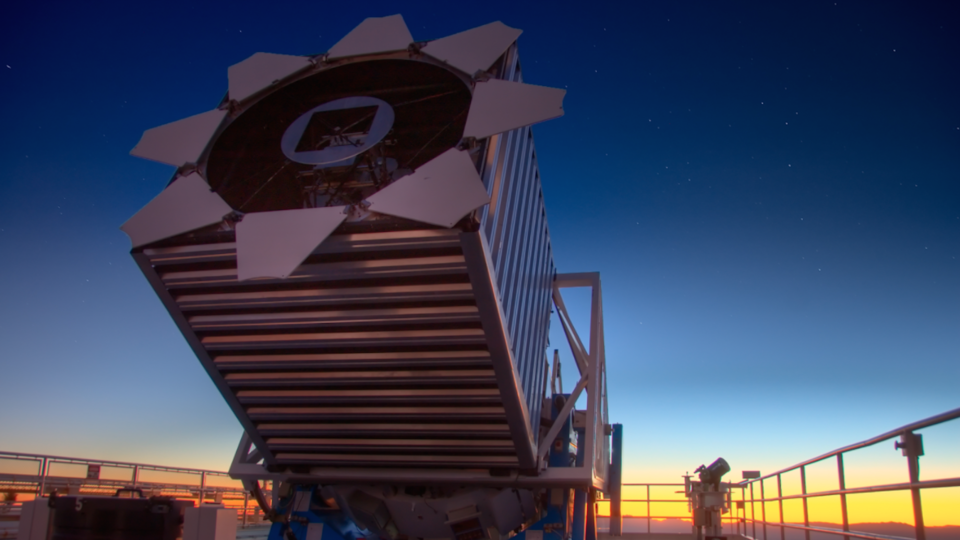Universe Update
Elements and Minerals—in Space!

We cannot touch the stars, but we can tell what they’re made of! Which turns out to be a key first step in the search for life—or at least exoplanets—in the Universe.
At the American Astronomical Society (AAS) meeting this week, two research groups announced ways to look for Earth-like planets and the elements of life. Both teams use innovative applications of data from the Sloan Digital Sky Survey (SDSS), the “Energizer Bunny of astronomical surveys,” as it was described at the press conference, since it keeps going and going and going…
One of astronomy’s great magic tricks (we call it spectroscopy) is determining the chemical composition of distant objects. In the case of a star, its light is contaminated by the presence of elements in its atmosphere, so careful observations can tease out the star’s chemistry.
During the press conference, Jon Holtzman from New Mexico State University shared the Astronomer’s Periodic Table of the Elements, which visually emphasizes the importance of hydrogen in astronomy by making it the largest box in the table. Because the Universe consists of 90 percent hydrogen, that makes perfect sense to an astronomer. But the research teams making their announcements at the AAS meeting take a more refined approach, since they’re interested in identifying the presence of trace elements that might form planets—or perhaps provide the building blocks for life.
Luckily, a star’s chemical composition tells us about the likely make-up of planets in orbit around it—and we can even speculate on the possibility of life on those worlds, based on the chemistry of the parent star.
As we discover more and more planets outside our solar system, Johanna Teske from the Carnegie Institution for Science wanted to distinguish between Earth-sized planets and truly Earth-like planets. She worked with Cayman Unterborn of Arizona State University to create computer simulations that would reveal how different chemical compositions could lead to different types of planets.
In particular, the researchers zeroed in on two known planetary systems, Kepler 102 (a star hosting at least five planets) and Kepler 407 (with at least two planets). SDSS had observed both these stars, so they knew the abundances of various elements in the parent stars. Among other differences, Kepler 407 has a ratio of magnesium to silicon that’s much smaller than Kepler 102—or the Sun, for that matter. As a result, Unterborn’s geophysical simulations showed that Earth-sized planets around Kepler 407 would be rich in garnet, whereas similar planets orbiting Kepler 102 would have a greater proportion of olivine—similar, indeed, to Earth.
Because of its softness, “olivine helps facilitate plate tectonics,” in Teske’s words, which in turn makes for a more Earth-like world. Garnet, in contrast, is a much harder mineral, likely less conducive to supporting the kind of geological activity we see on Earth. Because plate tectonics recycle the material between Earth’s crust and mantle, with the important side effect of regulating our atmosphere, scientists suspect that plate tectonics could be critical for the development of life on Earth.
Teske and her team plan to expand their technique to other planet-hosting stars observed by SDSS. And Teske also noted that this work will allow astronomers “to hone in on stars that have Earth-like abundances and use those as target lists for the next generation of surveys.”
With a similar motivation in mind, but focused more on the elements required for life—not necessarily planet-building—Holtzman and his doctoral student Sten Hasselquist used SDSS data to search for the “elements of life.” Holtzman referred to these elements of interest with the shorthand CHNOPS, an acronym for carbon, hydrogen, nitrogen, oxygen, phosphorous, and sulfur (that the assembled members of the press decided would be best pronounced like “Schnapps”). These six elements make up the most common biological compounds on Earth, so they’re a great place to start.
Holtzman and Hasselquist created an extensive catalog of 150,000 stars with measured CHNOPS abundances (there’s that word again), and they generated three-dimensional maps of the stars color-coded by their relative abundances of each element. Among other things, their study suggests that CHNOPS were available in the inner portion of the galaxy before the outer reaches of the galaxy. As Holtzman quipped, quoting a colleague: “There’s a reason why they put the Star Wars capital near the center of the galaxy…”
Categories: Astrobiology, Exoplanets